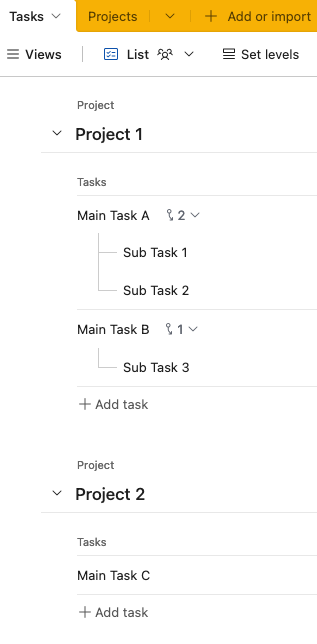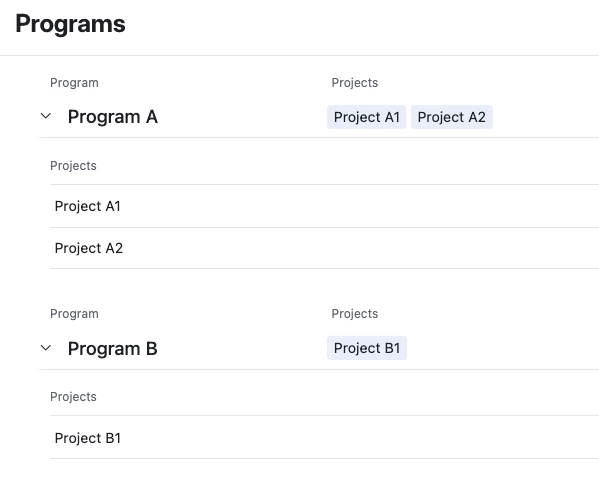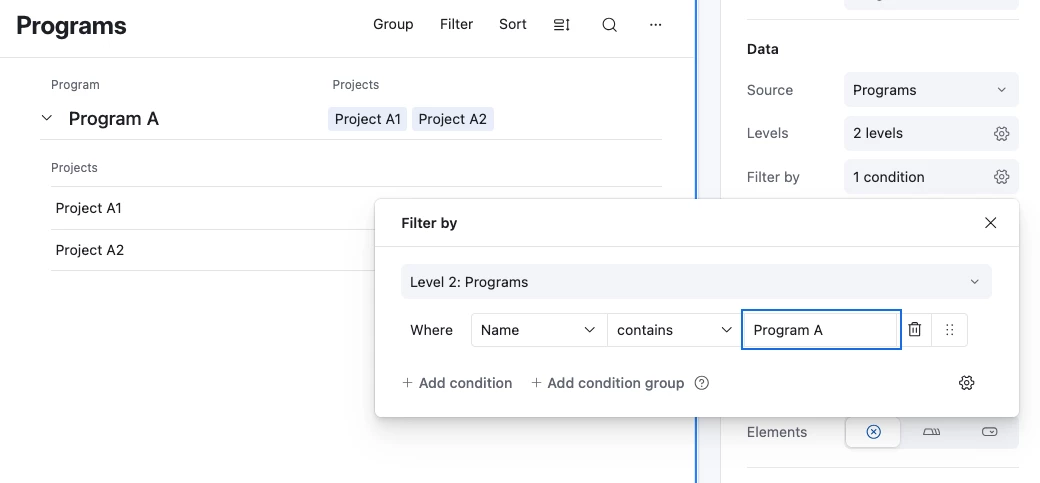I am looking for some guidance on how to structure my Airtable (whether on a single base or multiple) best program management. Currently, I am managing 6+ programs with multiple projects within them which I will breakdown for understanding
Before I outline the structure of the programs - the key goals I'm hoping to achieve are the following:
Primary goals
- Centralised source of truth for all programs
- Dashboards to show the progress of current programs (likely based on milestones)
- Show all tasks outstanding for each stakeholder
- Critical paths with date dependencies.
Secondary goals
- Track capacity of key stakeholders across all programs
- Link records to external bases e.g. Procurement, Lab testing, Supplier sourcing
(Use case: people submit form requests on these bases which turns into a request - would love automation to trigger this from PM bases or at least link the line item on the PM base with the new request item. Mainly to see status changes etc) - Budget tracking
(variation of quotes vs actual spend and categorizing that spend e.g. shipping cost, PO as these may be repeatable costs for different programs)
The Structure + Context
Level 1: The Programs
Apple
Pear
Orange
Melon
Grape
Level 2: The Program phase
E.g.
Apple Workpackage 1
Apple Workpackage 2
Pear Sprint 1
Pear Sprint 2
Melon Version 1
Orange Phase 1
Grape Phase 1
Grape Phase 2
Grape Phase 3
Level 3:
(Projects or "group of tasks" within each program phase)
NB: Some of these may be similar across the program phases and possibly even across certain programs but each is quite agile and specific so isn't exactly the same)
For example
Apple workpackage 1
- Planning
- Testing
- Production
Apple workpackage 2
- Planning
- Component 1
- Component 2
- Component 3
- Component 4
- Testing
Level 4:
The actual tasks within each "Project / Group of Tasks"
E.g. for Component 1 of Apple workpackage 2
- Evaluate the current stock of Component 1
- Source external partners to provide Component 1
- Gather quotes
- Gather samples from 3x suppliers
- Receive samples inhouse
- Internal Testing on samples
- Decision on which supplier to proceed with
- Order/PO request (Internal form)
- PO sent (once the status of the request turns to done - this to also be done)
- Production begins
Etc...
Level 5:
Further subtasks...
As you can see from above...you may want to track subtasks with each sample that comes in as internal testing may contain 4+ different steps that happen at each time across the 3 samples.
(I also understand 4 levels is probably as deep as Airtable goes)
I totally understand this is quite detailed but would appreciate any guidance on best practices with Airtable for any part of this.
Thanks in advance!





